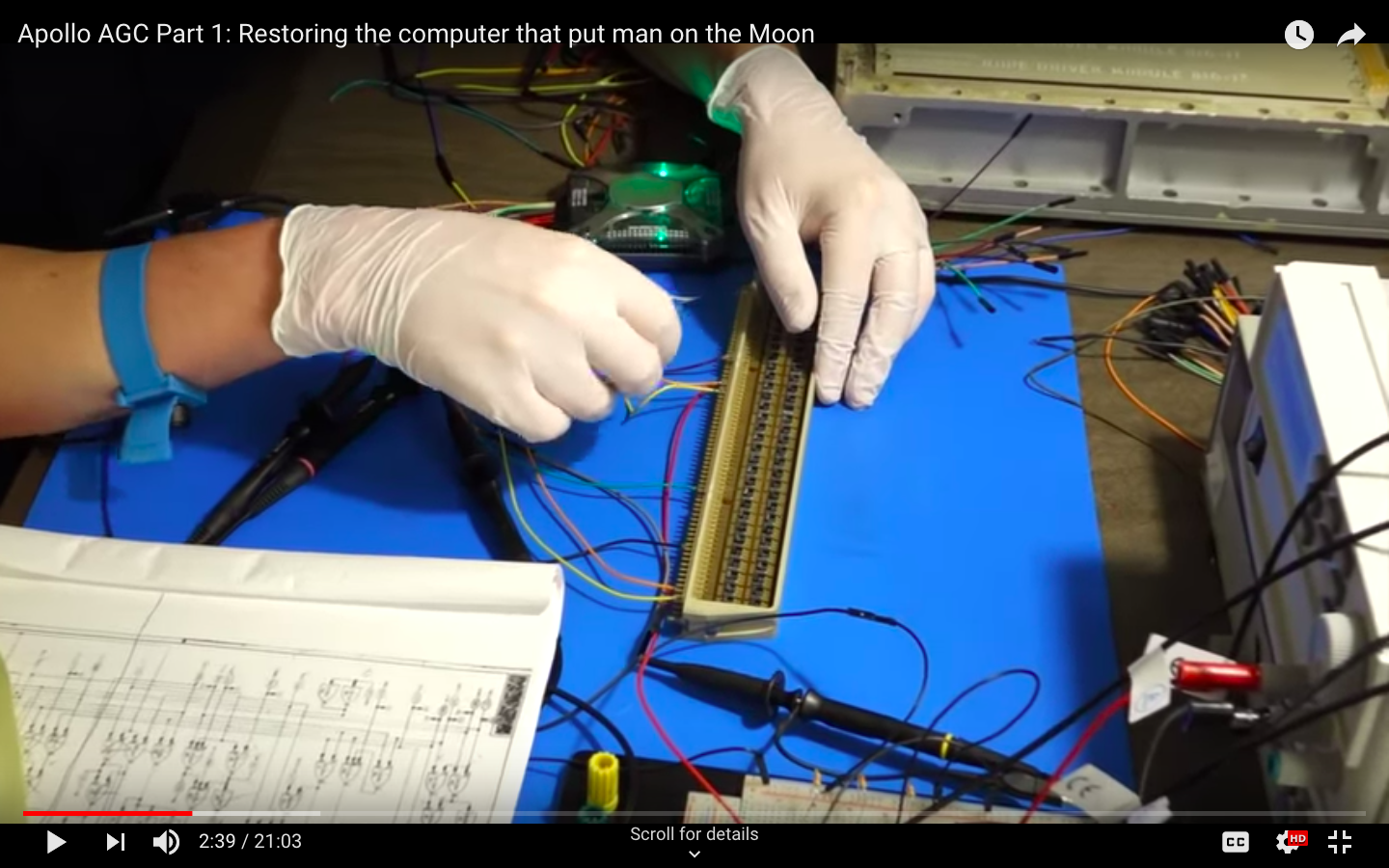There’s been some exciting events being planned/happening and some great stories being shared with the 50th anniversary of the Apollo 8 through 11 going on. Apollo 8 was the first spacecraft with humans on board to leave low Earth orbit, approach the Moon, orbit it, then make it back to Earth safely. Apollo 9 and 10 performed many tests that led to the success of Apollo 11 being the first space mission to successfully land humans on the lunar surface. Giant leaps and small steps aside, the advancement of technology had reached a point where people were really starting to impress themselves – and rightfully so. With all this came a computer that has been obsessed over by many: the Apollo Guidance Computer, also referred to as the AGC. Dude, it’s the computer that took us to the moon.

Among the cool stuff that did happen, is happening, and remembering the good times, one of the folks here at Digilent got turned onto a small group of people working on restoring one of the original fifteen AGCs for a fellow named Jimmie Loocke who bought 2 tons of Apollo equipment in 1976. Two and a half minutes in you see Mike Stewart (an AGC specialist who made a gate exact FPGA replica of the AGC) using a Digital Discovery and Waveforms to analyze the response of one of the Logic Modules which almost entirely uses 3 input NOR gates.

The Digital Discovery and Waveforms is providing a powerful and reliable logic analyzer that they can use in their hotel room for this massive project. The engineers explore and discuss quite a bit about the AGC, including the Core Rope Memory. Below is the first video in the series; you can even see the Digital Discovery chilling with the revered AGC in the preview image. Good luck trying not to watch more!


Nice article thanks giving the useful information about computer
Hi Mythri!
Thanks for reading. I am glad you found the content informative. Thanks for your feedback.